This past Friday marked the 71st anniversary of the start of this conflict. Like last year we are taking the time to answer your questions, update a few items, give you some things to try out and even a little extra something this year. So let us get right to it!
Here are the results of our KPA Paint Challenge I issued last year. It seems it was a huge success because no one sent me their armies. I guess people really enjoyed painting their KPA units like I knew they would!
FAQs/Fixes
A faithful gamer (Thank you Hamish Carpenter!) noticed a discrepancy with the access of the BTR to Communist Forces. He is his question:
“I have been trying to write a Chinese People’s Volunteer Army for Bolt Action Korea. However, I have stumbled upon a problem. On your website you sell a Chinese BTR-40 which is a Soviet-supplied APC. However, the PVA section of Bolt Action Korea rule book doesn’t have one and only has the BTR-40A which is an anti-aircraft variant.
So it appears I can’t take the BTR-40. Why is it then that you state on your website you sell a Chinese BTR-40 when the PVA can’t take one. This is rather confusing to me.“
In order to answer this question properly I talked with Steve Smith, the other author, and we both consulted all of our notes and drafts over several days. Here is the verbiage Hamish is referring to in all of the Communist Time Period listings:
Transport vehicle or tow (soft skins or armoured) per infantry and artillery unit in the reinforced platoon: pack animal, horsedrawn limber, Morris 15cwt truck, Buessing-NAG truck. My underlining and type increase and is not in the book.
After our combined digging we discovered we did not break out and list by name of any of the transport or tow options in the Communist list to the extent like the U.N. lists because there were so few options unlike the UN lists. We both figured by saying soft skins or armoured we were covered. Sorry about this! So the bottom line is the BTR-40 is available to both Communist forces. It also looks like unfortunately the vehicle description was not included into the Chinese Army list as it should have been. The Russians did issue them (about 100 of these vehicles and 350 to the North Koreans) and then China copied this BTR design and produced it as the Type 55 in unknown quantities. Also in the Chinese Period lists anywhere it says BTR 40 in the armoured car slot it should be the BTR-40A. Additionally any reference to the North Korean Army in the BTR-40A vehicle listing should be changed to Chinese Army.
So just to reiterate, yes both Communist Forces can include the BTR-40 and the Chinese only can take the BTR-40A as an armoured car.
Again a big thanks for finding this Hamish.
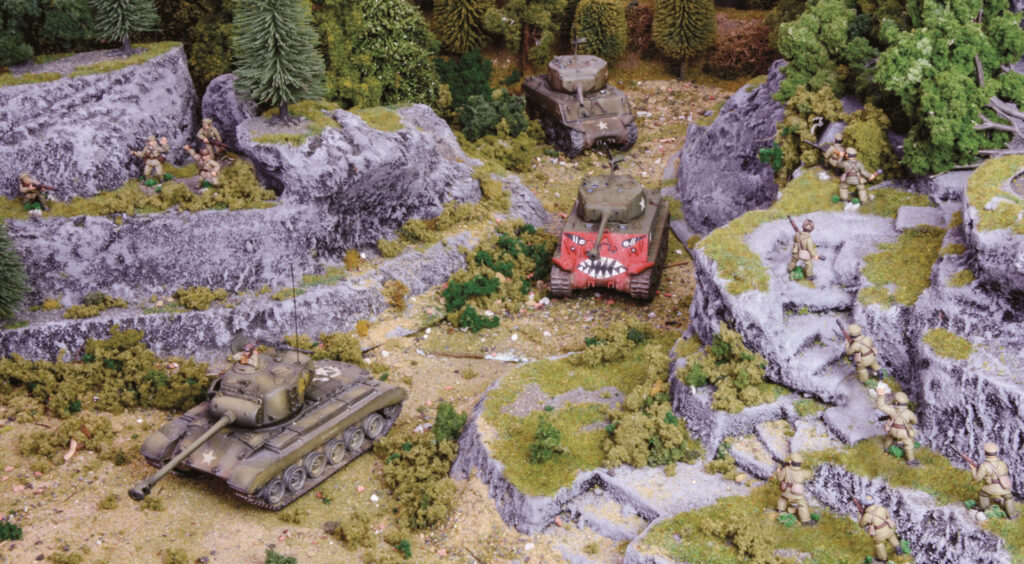
Here is an easy fix to a common KPA Flag Question. On page 76 of BAK add the following (For +3 more points allow the bearer to exchange his pistol for a SMG.) after the line: with flag and pistol for +25 points.
On to the next Question!
Q: Why can the KPA Guerilla Cells be expanded and armed like the PVA ones on p.170? Presumably, when they had fought against the Japanese, KPA cell members might have gained similar experience and used similar tactics as did the Koreans who were later recruited into the PVA cells. And they might even have been closer to their Korean roots, hence better-able to blend-in in full squads, as they were not in the ultimately Chinese PVA. Might some even have fought in the same guerrilla units during WWII? Besides, and personally speaking, it would be fun to model and convert a full squad of KPA guerrillas with various options, and not have to raise an entire PVA force for the sake of modelling them!
A: The first line in Chinese Guerilla section: Add up to six guerrillas +9pts (Inexperienced), +12 pts (Regular), +15 (Veteran) was inadvertently cut from the KPA entry on page 83. This will be corrected in the next update so please until then add this line to your copies of BAK. The armament is correct. I will ask the Studio if we have plans for some Civilian Models with options to arm them for this idea!
Here are some needed edits to some of our scenarios to better explain and remove any confusion from them.
Scenario 4 Deployment:
“The KPA player must deploy … on their half of the table (the beach and open ground.)”
Q. If the beach extends 18″ in from the attacker’s side, and the table is 4′ wide, the defender’s half of the table would not include the beach. Had you meant “… on their part of the table …”?
A. (the beach and open ground.) should have been removed.
Scenario 14 Deployment:
“Units may not be deployed within 6″ of a table edge or within 18″ of an enemy quadrant.”
Q. Looking at the map’s geometry, the 18″ rule would seem to preclude deployment anywhere on the map! Had you meant some other distance than 18″?
A: Should read 6″ of a table edge and must be within 18″ of an enemy quadrant.”
And finally here is a great idea about adding a bit more flavor into the terrain features of the Korean Peninsula.
Q. More traditional Korean homes often seem to be enclosed by stone walls – I am not yet sure about the extent, but might this be something to represent when rural structures are on the table?
A. Some of the more wealthy ones had stone walls while most had fences made out of shrubs, wood or anything they could get a hold of. Feel free to add this terrain feature to your tabletop!!
Q. A fair number of battles, e.g. Kapyong, were fought over hill tops, and much larger hills than in the scenarios. Anyway, might it be worth considering giving the defenders of higher contours some variant of the “defensive position” rule if the attackers are attacking up across a contour and are not climbing up a road?
A. This is a great idea. We will play with this idea and see what we come up with!
And just as a reminder folks, we fixed the Bugles error fixed last year. Additionally make sure you read all the box outs, there are some pretty nifty rules tucked into them, like the USMC troops using body Armor (Page 61)!
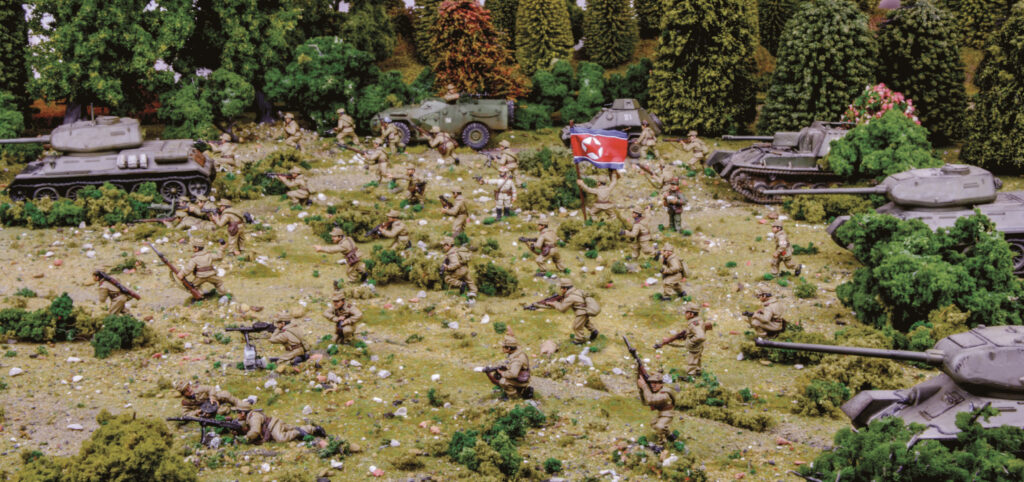
Additional Scenarios We are Currently Working On
Battle of Sangkumryung – Valiant Chinese troops in a fortified Cave complex defends against Wave after Wave of U.N. Puppet troops with great elan. The overpowering might of the communist forces inflict crippling losses on the U.S. Imperialist Forces. This win during the War to Resist U.S. Aggression and Aid Korea brought great pride for all Communist Nations around the world.
New Equipment
FOUGASSE – U.N. Units in a defensive role get to purchase 1 to 3 hidden remote control detonation mini napalm bombs with a four inch diameter at a cost of 50 points each. One the device is triggered, place a four inch template over the initial explosion and follow the explanation of a napalm strike from the table on page 215 or 216 in BAK with the impact point being where the gas drum exploded AWAY from the U.N. positions.
New Experimental Rules
Scratch my Back – If a tank is being close assaulted by infantry and another friendly tank without an order on it is within the REAR ARC (see page 104 of BA main rulebook) of the tank being assault they get a SNAP TO order and can fire at the assaulting infantry with all the vehicles Machine Guns (but not any pintle mounted ones) before the results of the Combat take place.
Tiger Fear – During the battle of Chipyong-Ni the Commander of the relief forces Colonel Crombez had all the tanks painted with a snarling tiger face on the front of each tank so they looked like metal monsters in order to intimidate the Chinese who they thought were superstitious. To use this in game terms after FEB 1951 any inexperienced Chinese infantry unit within LOS of a tank WITH AN ACTUAL TIGER PAINTED ON THE FACE must take a morale check. Any failures will result in one pin being attached to the unit for the duration of the turn. This pin is removed at the end of the turn if they can no longer see the tank. If they are not out of the LOS they will retain the pin marker and not get another one. Additionally the unit can only ever have one pin marker regardless of the number of tanks in their LOS.
Units on the Drawing Table
We are working on generating an Army list for the Commando 41 unit. This U.N. unit was responsible for many hit and run and commando raids all over the Korean peninsula. We will get the list generated and out to you as soon as we can.
SPECIAL MENTION GOING OUT TO NICK PARSONS – HUGE KUDOS for him setting up the European Bolt Action Korea Facebook page and all the posts and information he and others have posted there. THANK YOU NICK!
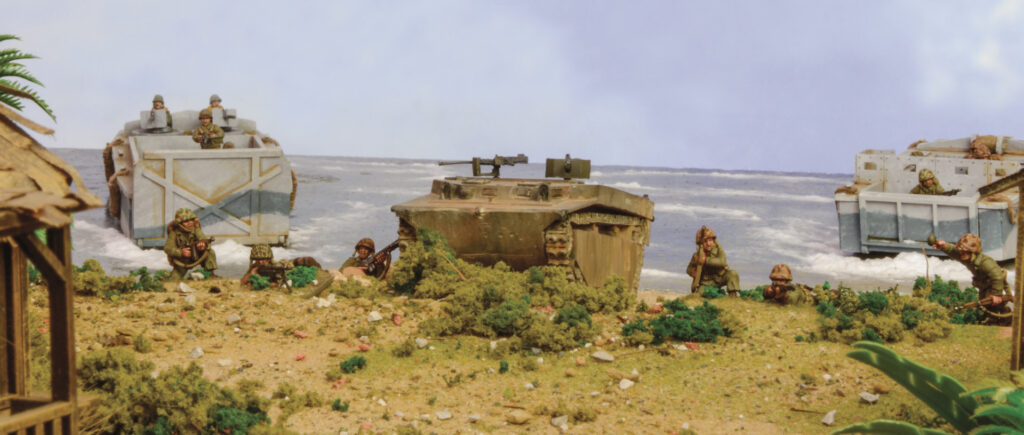
Incorporating Cruel Seas into Korean Campaigns
Here are three great ideas for some CS scenarios. Send us your ideas and the top ones will get a special box in the mail from me!
The Battle of Haeju was a small naval battle during the main phase of the Korean War.
Off Haeju Bay in the Yellow Sea, on September 10, 1950, days before the Battle of Inchon, a South Korean navy patrol boat, PC-703, encountered a North Korean navy minelayer sailing vessel. After a brief fight, the North Korean minelayer was sunk with a loss of all crew and no South Korean casualties were reported.
After the minelayer’s sinking, PC-703 discovered that the sunken vessel had laid a mine field at the mouth of the Haeju Man and then reported to base the location of the sea mines. Two days later on September 12, PC-703 encountered three small transports and sank them. The three supply vessels were most likely unarmed.
The Battle of Chumonchin Chan or the action of 2 July 1950 was the battle fought between surface combatants during the main phase of the Korean War. It began after an Allied flotilla encountered a Korean People’s Navy supply fleet.
On 2 July 1950, USS Juneau, HMS Black Swan, and HMS Jamaica were sailing along the coast of the Sea of Japan (East Sea) when they encountered four North Korean torpedo and gunboats that had just finished escorting a flotilla of ten ammunition ships up the coast. The North Korean torpedo boats began an attack on the allied ships.
Before their torpedoes could be fired however, they were met with a salvo of gunfire from the United Nations ships which destroyed three of the torpedo boats. The surviving North Korean craft fled. Later in July, Juneau encountered the same ammunition ships and destroyed them.
The Battle of the Korea Strait, 26 June 1950. The lone bright spot in an overwhelmingly bleak situation on the first days of the attack was provided by the fledgling Republic of Korea Navy (ROKN). Before dawn on 26 June 1950, the most capable ship in the ROKN was underway from the main base at Chinhae and was on patrol about 18 miles from Pusan (now Busan) at the southeast tip of the Korean Peninsula, and sighted an unidentified ship in the darkness. The submarine chaser Bak Du San (PC-701), the former USS PC-823, challenged the unidentified steamer with signal lights, but received no response. Bak Du San then turned her searchlight on the steamer and received heavy machine-gun fire in return that killed the helmsman and seriously wounded the officer of the deck. Bak Du San then engaged the steamer with her single 3-inch gun and six 50-caliber machine guns.
The unidentified 1,000-ton steamer was actually a former U.S. transport that had been hijacked by South Korean Communist guerillas in October 1949 and taken to the North. On the night of 25–26 June 1950, the steamer was carrying 600 troops of the North Korean 766th Independent Infantry Regiment with the intent of seizing the port of Pusan. In a running gun battle at ranges of less than 400 yards, Bak Du San sank the steamer as she tried to flee, with the loss of almost all the North Korean troops on board. ROKN sailors used M-1 rifle fire against North Korean troops that tried to reach their vessel. Bak Du San suffered two dead and two wounded.
The “Battle of the Korea Strait,” as the ROKN would call it, had major strategic importance. At the time, the port of Pusan was very poorly defended. Had the North Korean surprise operation succeeded, the outcome of the war might have been very different, because by the beginning of August, Pusan was the last remaining port in South Korea that had not fallen to the North Koreans. It would be the only initial entry point for the U.S. forces that prevented the North Koreans from overrunning the entire Korean Peninsula.
Now to end this year’s update here are a few more sources for you to use in expanding your BAK forces. Till next update I hope your dice are fair and your tables level!
Cheers,
Jon and Steve
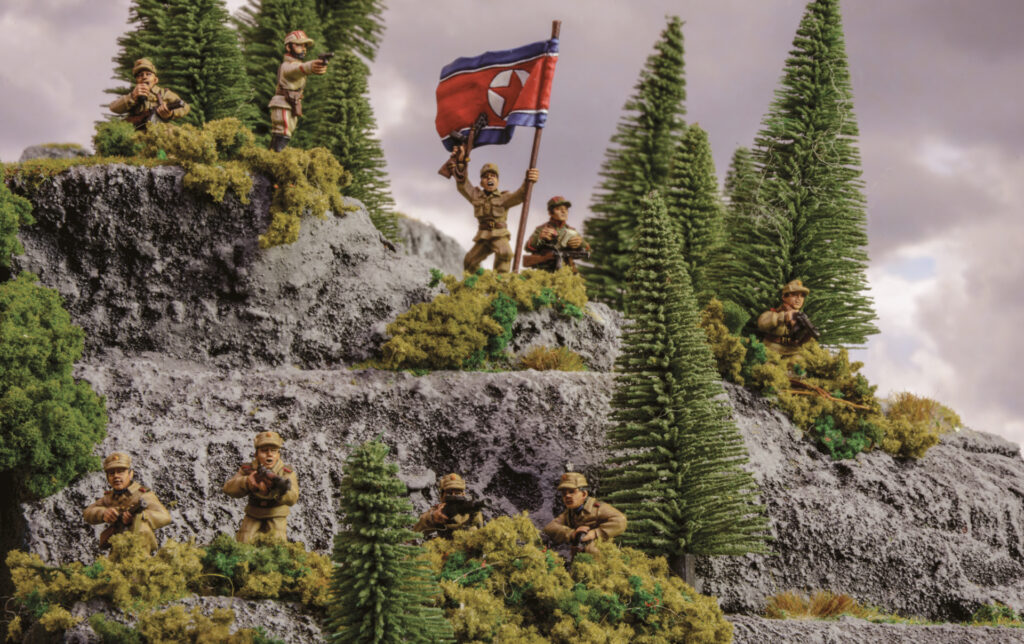
Links
https://www.nam.ac.uk/explore/korean-war
Expanded Bibliography
- The Battle of Sangkumryang By Lu Chu Kuo
- Memoirs of a Chinese Marshal Autobiography from the notes of Peng Dehuni
- The Reds Take a City by John W. Riley Jr. and Wilbur Schramm
- The Korean War by Matthew B. Ridgway
- Red Wings OVer the Yalu by Xiaoming Zhang
- So they Will Know by Sinclair W. Stickle
- Battle of Jangsari (Movie)
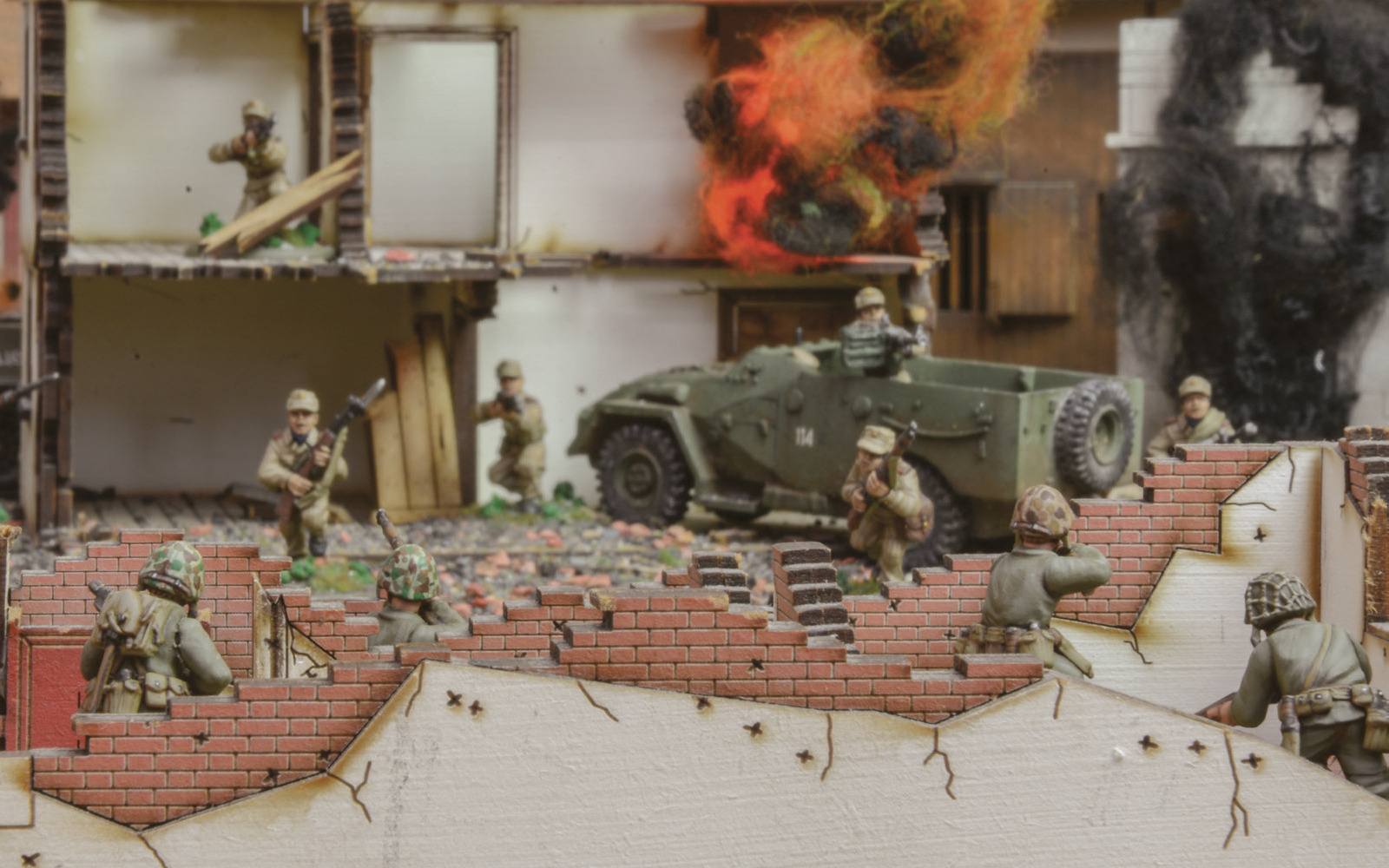
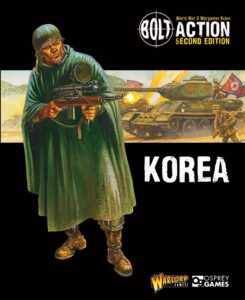
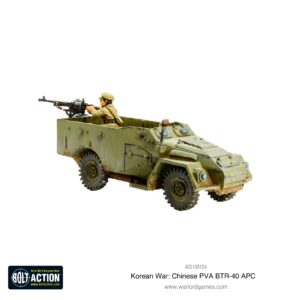
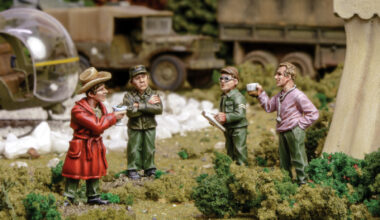
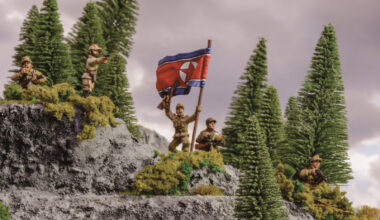
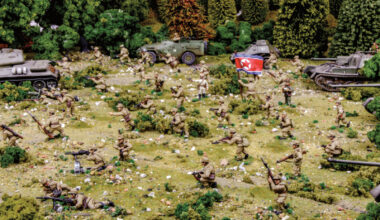
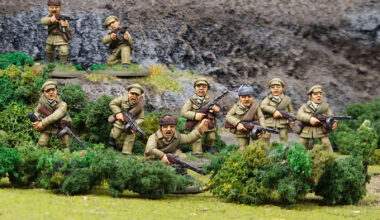
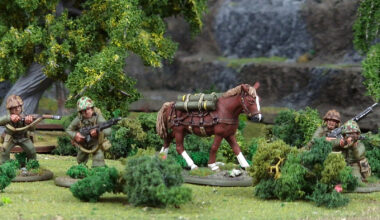
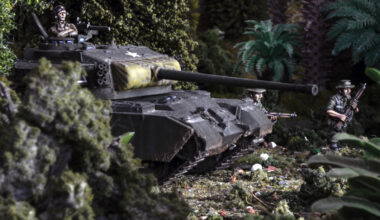
5 comments
Nice to see Korea getting a bit of love. Sometimes I think I’m collecting it alone (but then same with everything for the last year). I’d like to see something based around the Glosters at Imjin River. Meanwhile I’m watching old episodes of MASH.
Terry,
If you haven’t already, please join the Bolt Action Korea Facebook groups, you are not alone 👍
Regards
Nick
I already did but find it sadly quiet. KPA were my next project but stuff got in the way. Still bubbling near the top.
You are very welcome, it’s a honour and in some way keeps the Korean War and all the veterans that fought there in our thoughts🎖
I also may have a few things in the Pipeline for the Royal Marines in Korea, a few scenarios involving trains !!
Any chance of an Oxford Carrier for the British? It’s the big brother of the Universal and predecessor of the FV432. It only seemed to be used in Korea but it get’s frequent mentions in accounts. Bovington have one as well as the updated (but never used) Cambridge.
Comments are closed.